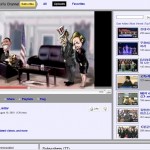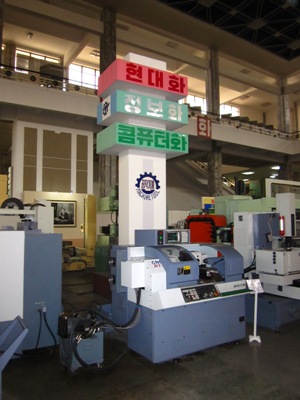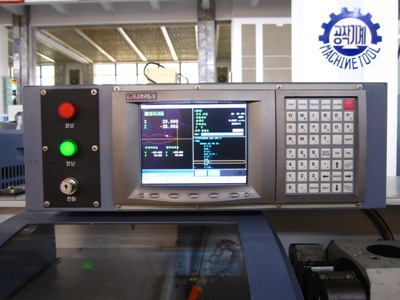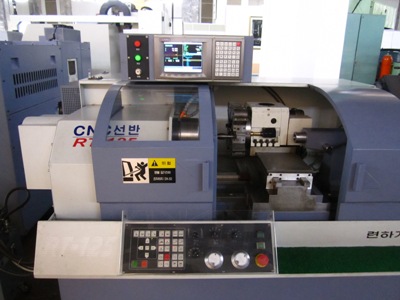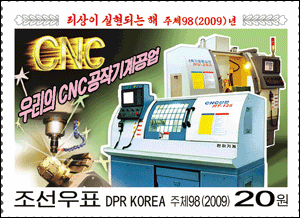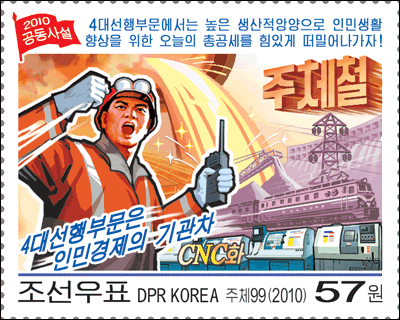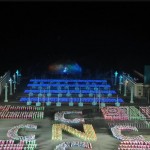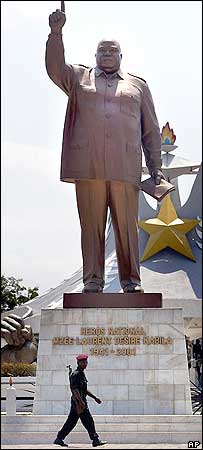Herald Tribune
Lee Su-hyun
2/11/2009
After she defected here from North Korea in 2006, Ahn Mi Ock was shocked to learn that most South Koreans lived in small apartments and had to struggle to buy one.
Ahn, 44, had fully expected that once in the South she would enjoy the same luxurious lifestyle portrayed in the television dramas she had watched on smuggled DVDs. It had not occurred to her that the fashionably dressed characters sipping Champagne in the gardens of stylishly furnished houses were not, well, average South Koreans.
That disappointment aside, she and many other North Korean defectors find themselves plunging into the unaccustomed wealth of South Korea’s entertainment and news media, fascinated by the astonishingly free flow of information and critiques of political leaders, but also searching for tips as to how to navigate this strange new society.
“When I first came here, I was glued to the TV screen every waking moment,” said Ahn, a former art teacher who now works in a restaurant.
Most newly arrived North Koreans spend up to three months at government settlement centers, taking crash courses in capitalism and democracy. They are also taught basic skills like how to use ATMs and home appliances.
But many say they still feel insecure about moving into the real world. With no previous exposure to a free press and 60 years of separation between the South and the North, they sometimes feel they are speaking different languages.
“I was so surprised when I first saw a music video here and didn’t understand a word of a rap song – in Korean,” said Yu Chong Song, 27, who is studying Chinese at Dongkuk University.
That’s where close study of South Korean media comes in.
Recent defectors say that in North Korea, the typical resident might watch half an hour of television news about how Kim Jong Il, the national leader, spent his day. They might spend another hour watching popular dramas, often involving the fate of the nation – assuming the electricity supply allows.
As for newspapers, the 20 former North Koreans interviewed said home delivery was only for the privileged. Those who did have access said the contents were boringly predictable, and that a better use of newsprint was for rolling cigarettes.
But in their first 6 to 12 months in South Korea, they said, they spent at least three hours a day watching television: talk shows, reality shows, quiz shows. (When they first arrived, they had few acquaintances and no jobs, and so had a lot of time on their hands.)
They said they paid closest attention to news and dramas, because they thought these provided the most useful portrayals of South Korean society. The hope was that by using television to study the differences between the two countries before daring to face actual South Koreans, they could reduce the chances of embarrassment.
Kim Heung Kwang, 49, a former computer science teacher who now works in an organization that finds jobs for defectors, said it was only by watching a television movie that he learned that a host should offer his guests a drink.
“Not only must I offer something to drink,” he said, “but ask if they want coffee or tea and whether they want sugar or milk, and then how many spoonfuls.”
Still, there are limits on media study as a learning tool. It is not always clear how much of what they are viewing is truly representative of South Korean life, and how much is fantasy.
“I stopped watching television dramas, because it was getting in the way of my relating to the South Korean people,” said Kim Heung Kwang, who said he still was not sure whether South Korea was a place where mistresses were bold enough to tell their lovers’ wives to get lost.
Ahn, for her part, was concerned about how her 19-year-old daughter might cope with the lust-consumed South Korean men, who apparently devote much of their daily routine seeking unencumbered romance – or so television dramas had led her to believe.
To alleviate their confusion, a Newspaper in Education program to encourage young people to read was introduced a year ago at Setnet High School, an alternative school for North Korean defectors. There, they can ask an instructor to explain concepts they encounter in newspaper pages.
“What is business and sales?” asked Park Jeong Hyang, 18, during a Setnet class.
“Amateur? Is that something to do with sports?” asked Mah Gwang Hyuck, 23.
“Can you explain what marketing is again?” asked Kim Su Ryun, 18.
Especially troublesome are the loan words, mostly derived from English, used in almost every sentence, and South Korean words not used in the North. But perhaps even more difficult to understand is the media’s role in South Korea.
The defectors express shock that the media can point a finger at a head of state. “I don’t know how President Lee Myung Bak can continue running the country after getting so much criticism,” said Cho Eun Hee, 23, a Setnet student.
All those interviewed agreed that freedom to challenge the government is desirable but felt uncomfortable seeing so much of it.
“Television even broadcasts scenes of politicians fighting in the National Assembly. That can’t be good for the image of the country,” Ahn said.
Still, Kim Heung Kwang saw some merits. He was impressed to see his modest apartment complex featured in a television news report about tenants of a nearby prayer house complaining about construction noise. He was familiar with the dispute and felt the reporters were relaying the facts fairly.
Cha Eun Chae, 20, said that in North Korea, there was no way of knowing how the economy was performing, because every story was upbeat: “They would always say, ‘The harvest was good this year.’ But we saw our neighbors starving.”
Over time, as the newcomers learned to read and understand them, the local media became more relevant to their everyday lives. Noticing that self-promotion is important in South Korea, one university student aspiring to a career in business scrutinizes newspaper columns and editorials for hints.
“I want to learn how to articulate my ideas while accommodating others’ opinions,” he said. “And I see that in the way editorials here are written – for example, on the controversy over embryonic cloning.”
Not everyone succeeds in applying media models to interaction with South Koreans.
Kim Keum Hee, 38, who works as a cleaner at a public bathhouse, tried to mimic a hotelier she had seen in a television drama.
“But I just couldn’t do it,” Kim said. “I’m still not used to being friendly when I don’t mean it.”

